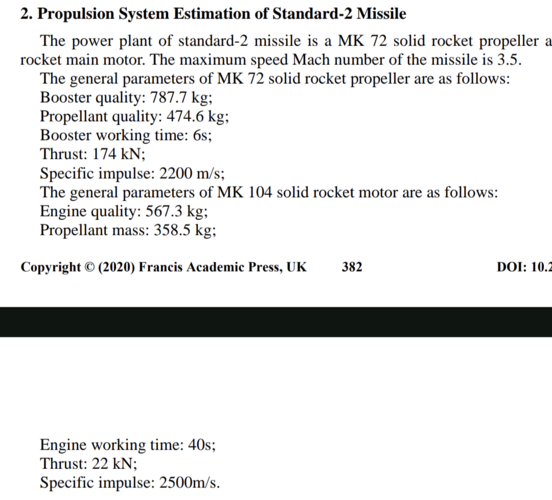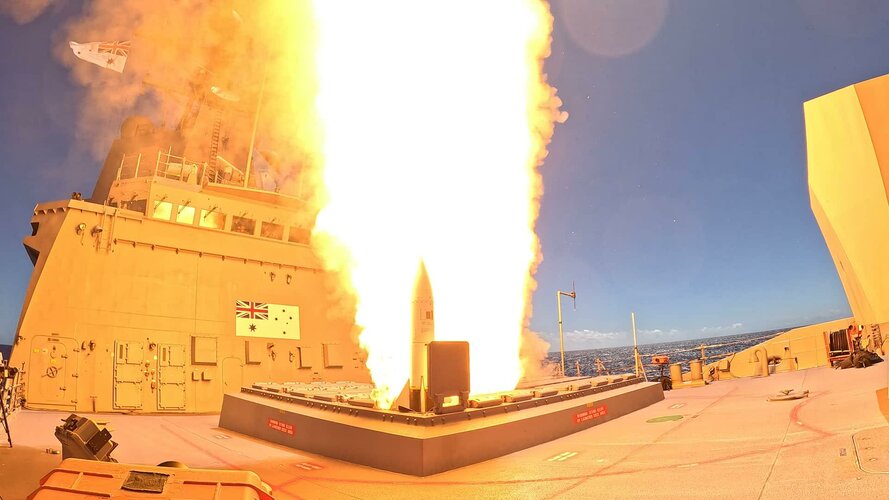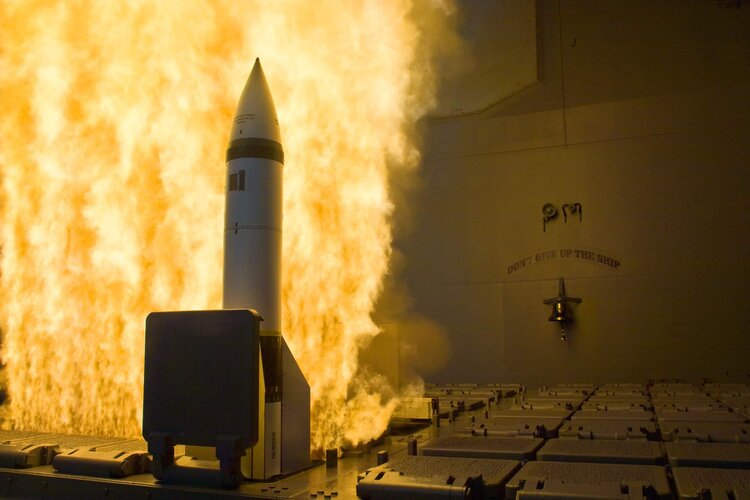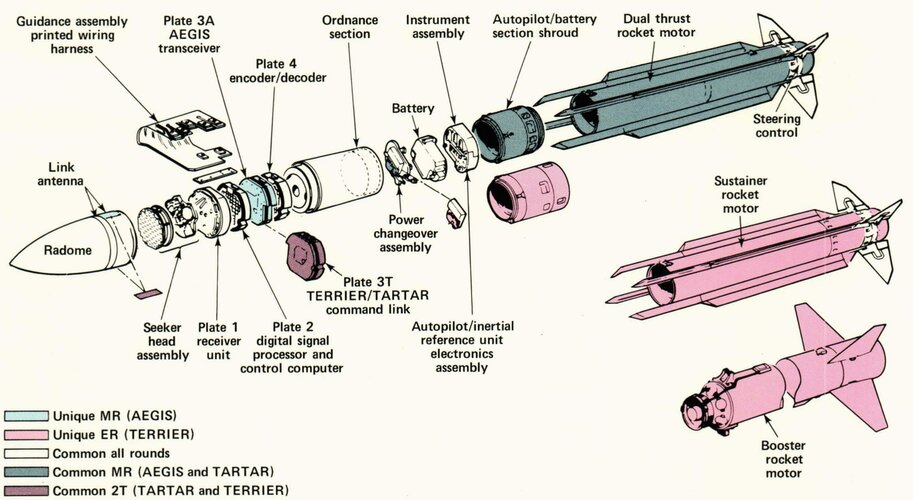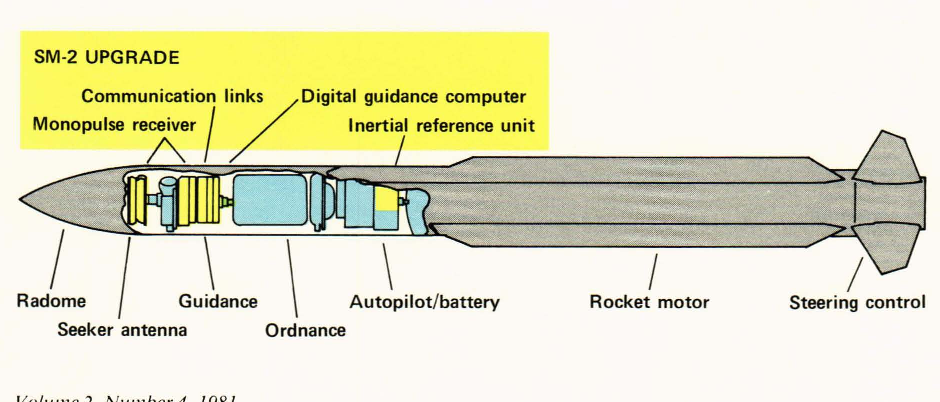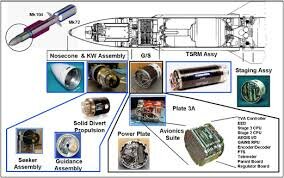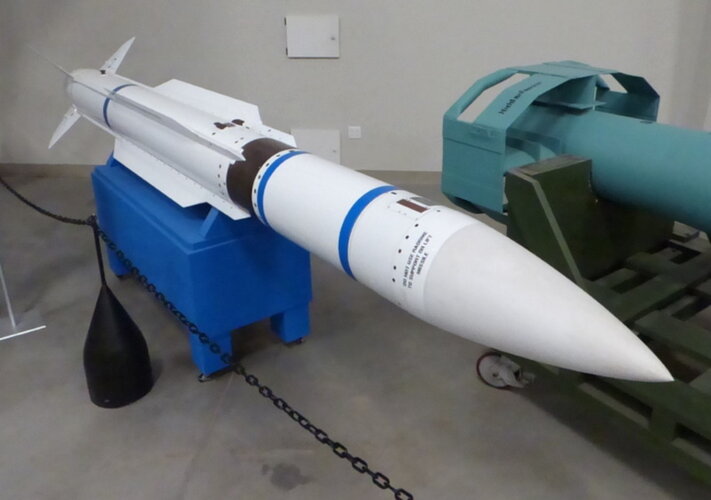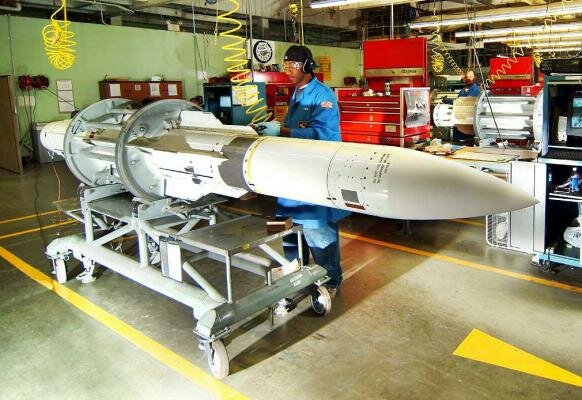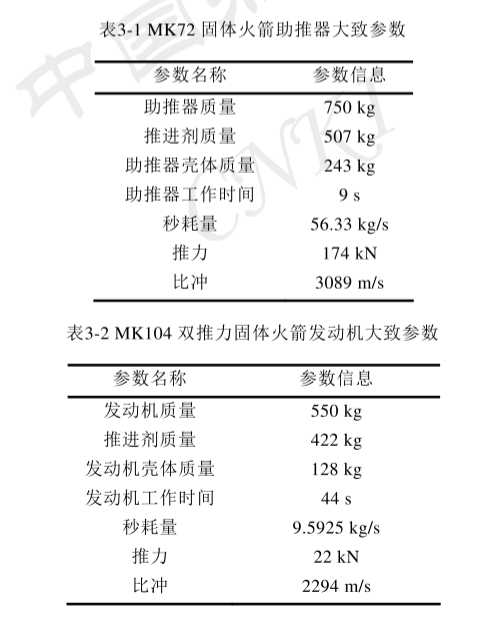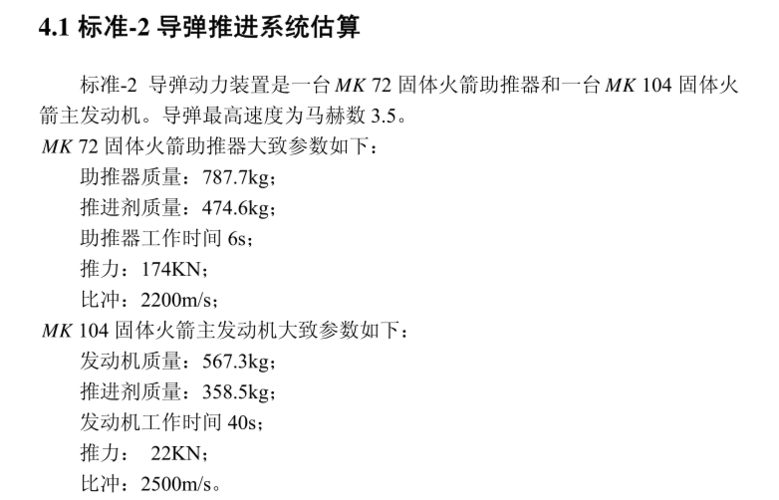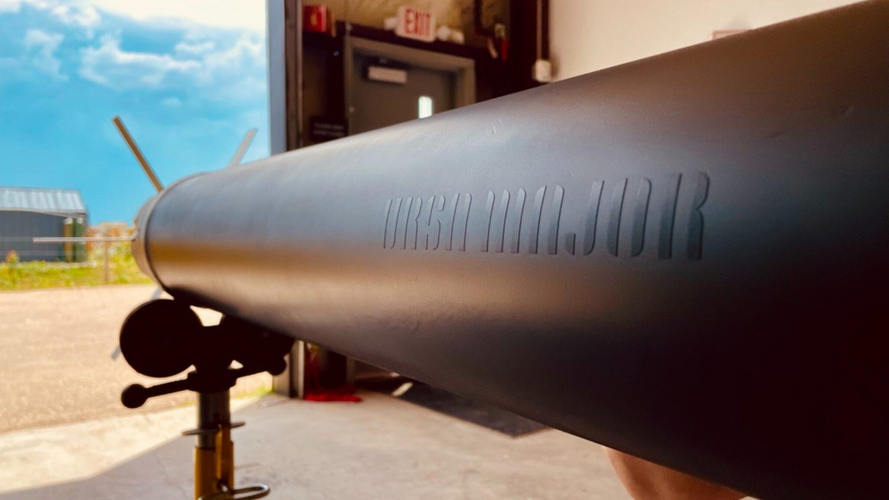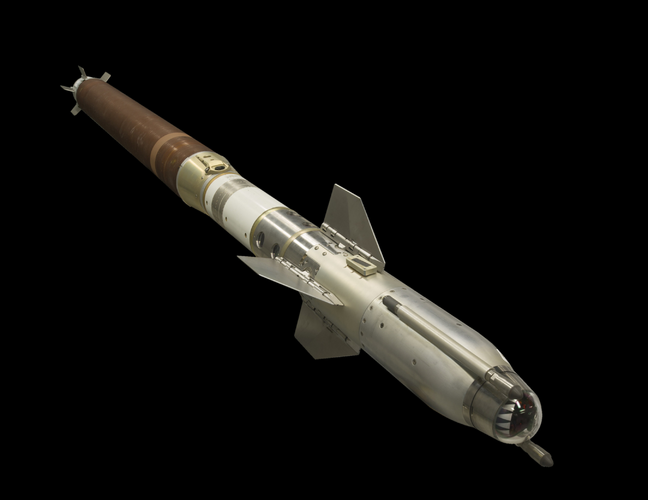TAOG
I really should change my personal text
- Joined
- 7 October 2018
- Messages
- 108
- Reaction score
- 241
Data is all from chinese paper.
One is SM-2 Block4A study (see the attached paper and picture).
The other seems to come from a sm-3 paper study.
MK-72
Gross mass: 750kg
Propellant mass: 507kg
Thrust: 174KN
Engine working time: 9s
Specific impulse: 3089m/s
MK-104
Gross mass: 550kg
Propellant mass: 442 kg
Thrust: 22KN
Engine working time: 44s
Specific impulse: 2294m/s
MK-136
Gross mass:100kg
Propellant mass: 70kg
Thrust: 7kN
Engine working time: 20s (10+10)
Specific impulse: -
One is SM-2 Block4A study (see the attached paper and picture).
The other seems to come from a sm-3 paper study.
MK-72
Gross mass: 750kg
Propellant mass: 507kg
Thrust: 174KN
Engine working time: 9s
Specific impulse: 3089m/s
MK-104
Gross mass: 550kg
Propellant mass: 442 kg
Thrust: 22KN
Engine working time: 44s
Specific impulse: 2294m/s
MK-136
Gross mass:100kg
Propellant mass: 70kg
Thrust: 7kN
Engine working time: 20s (10+10)
Specific impulse: -

